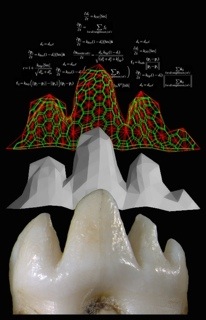Modeling
Computational modeling is used to explore the processes underlying morphogenesis. The operational aims are to test whether simple principles can account for development, and to build models and rules that can be used to predict evolutionary patterns. Our focus is mainly on mammalian teeth, including the regulation of tooth shape and more recently on the regulation of enamel formation. We have also worked on other systems, for example taste buds and tortoise shell. Even though models are generally thought to be ‘wrong’, they are still useful in delineating what is known, and what is still to be explained. To this end, our models on tooth patterning and enamel formation form our working hypotheses that help to formulate new questions. Often these models open up research directions we had no idea about when the models were built. We aim to make all the computational models available for other workers. And as also we forget how to use them, we try to make the models easy to use. Example of this is the ToothMaker.


